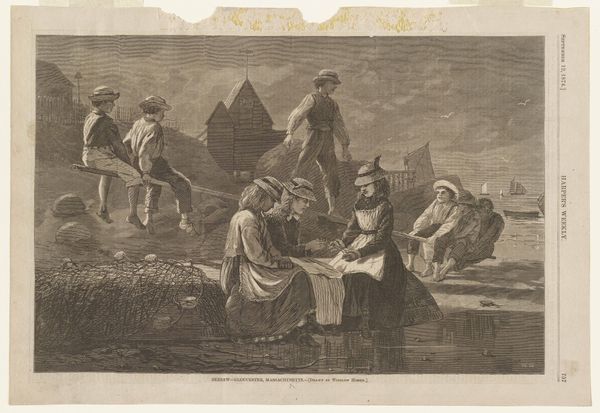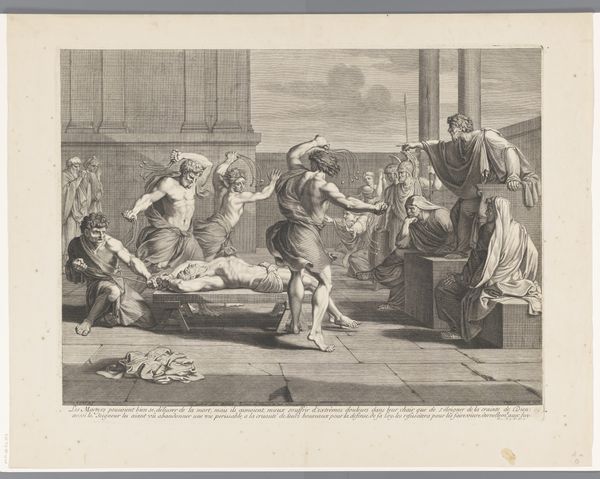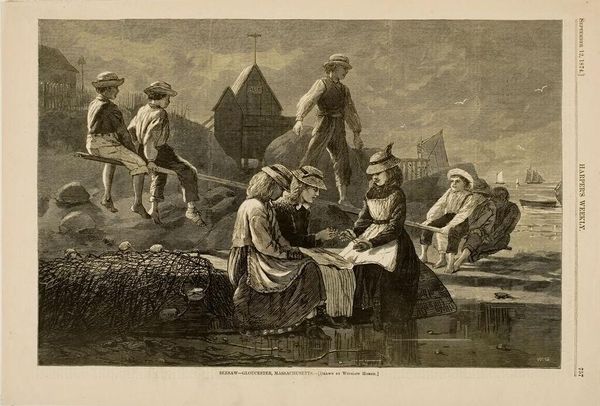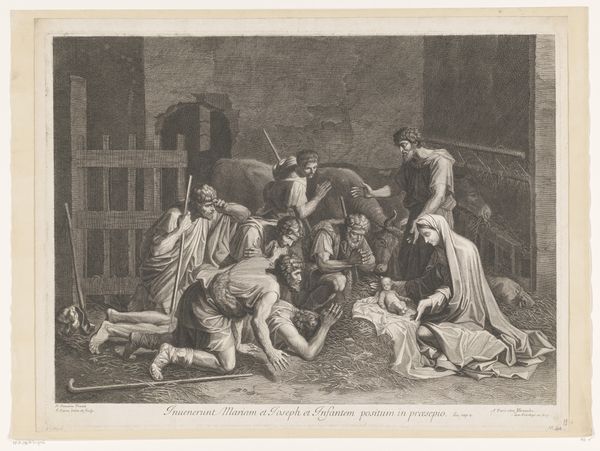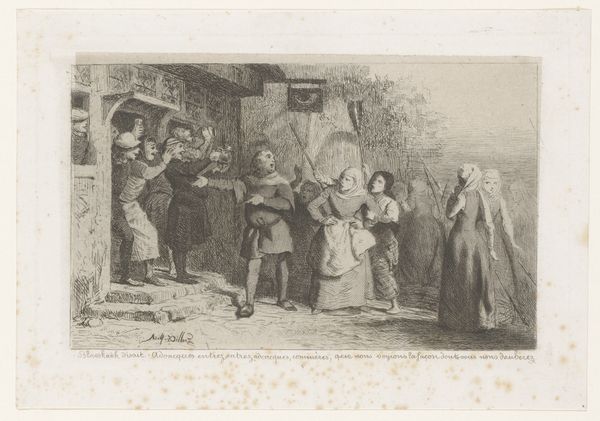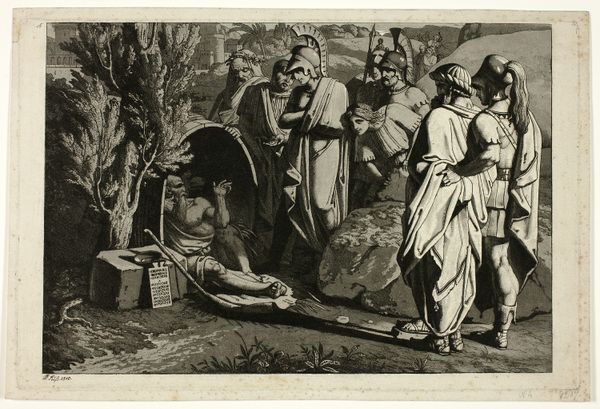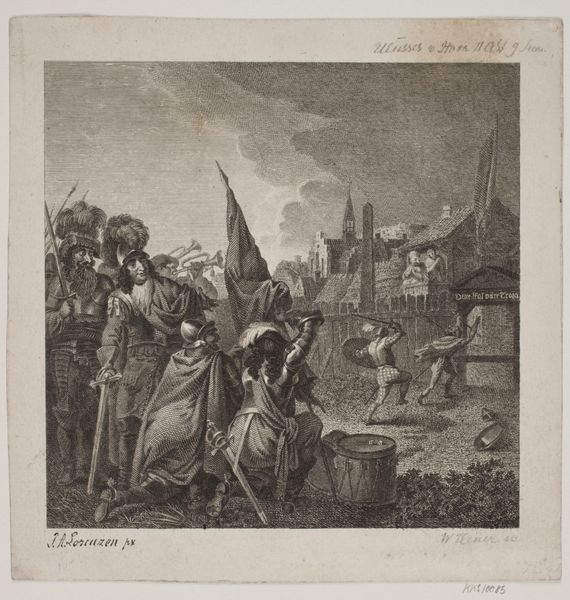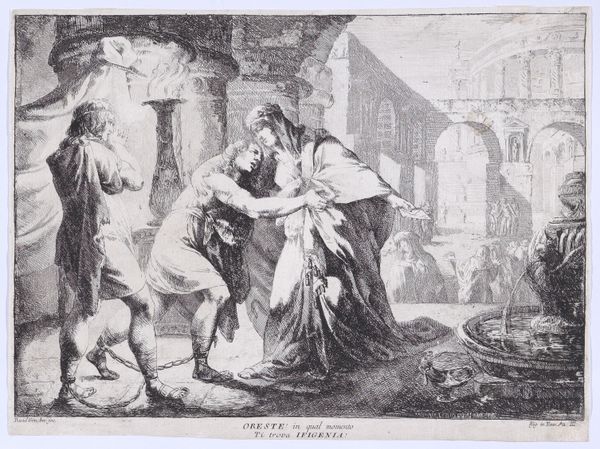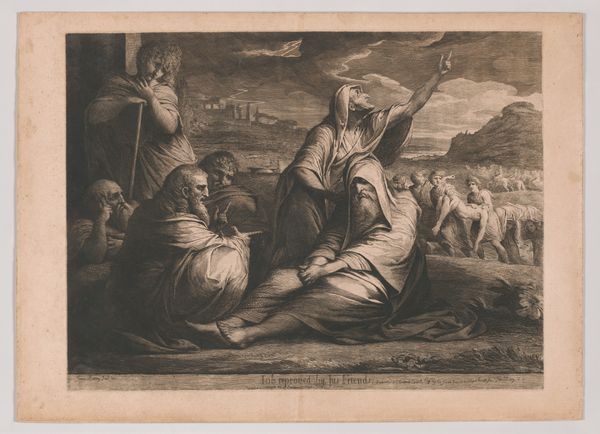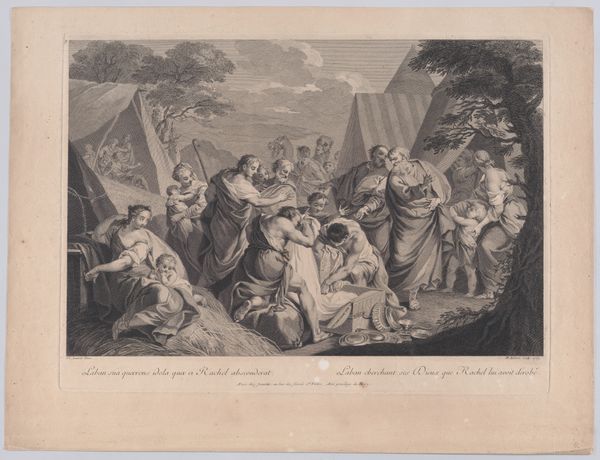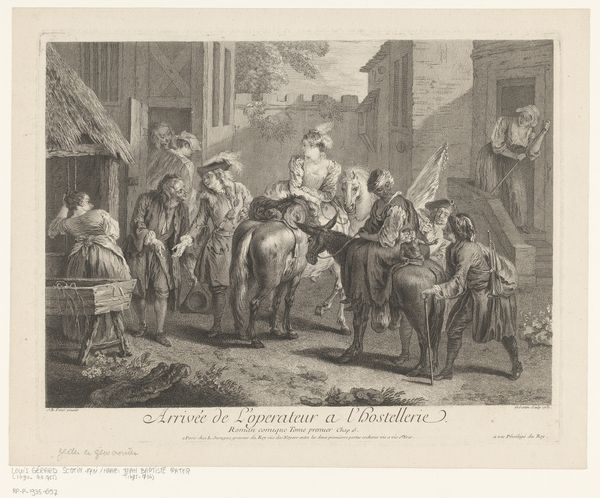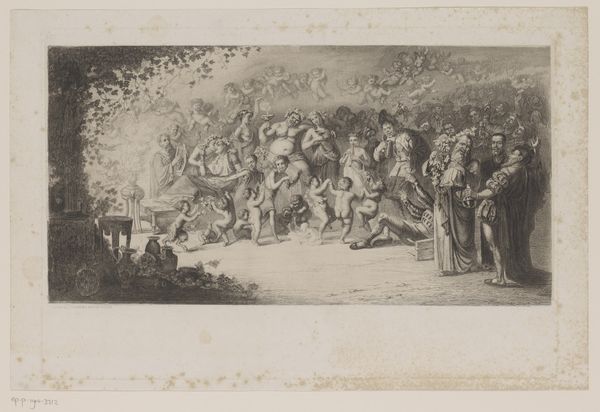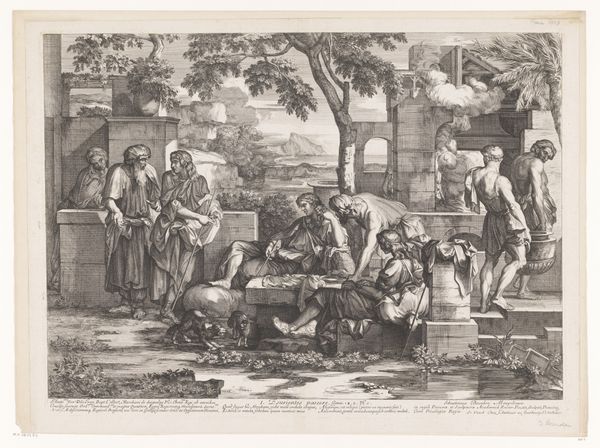
Seesaw, Gloucester, Massachusetts (from "Harper's Weekly," Vol. XVIII) 1874
0:00
0:00
Dimensions: image: 9 1/8 x 13 3/4 in. (23.2 x 34.9 cm) sheet: 10 13/16 x 15 15/16 in. (27.5 x 40.5 cm)
Copyright: Public Domain
Winslow Homer captured this wood engraving titled "Seesaw, Gloucester, Massachusetts" for Harper's Weekly. At first glance, the seesaw represents a simple childhood game, embodying balance and reciprocal action. The seesaw appears in various forms across cultures. Think of the scales of justice, where equilibrium signifies fairness. Yet, Homer’s depiction carries a deeper echo. The children teetering on the seesaw evoke the precarious balance of life itself, swinging between joy and sorrow, hope and despair. This visual metaphor resonates with our collective memory, reminiscent of ancient symbols like the Uroboros, a serpent eating its tail, representing life's cyclical nature. The composition strikes a powerful chord, engaging us on a subconscious level, reminding us that life is an endless cycle of ups and downs, demanding constant adjustment and resilience.
Comments
No comments
Be the first to comment and join the conversation on the ultimate creative platform.
